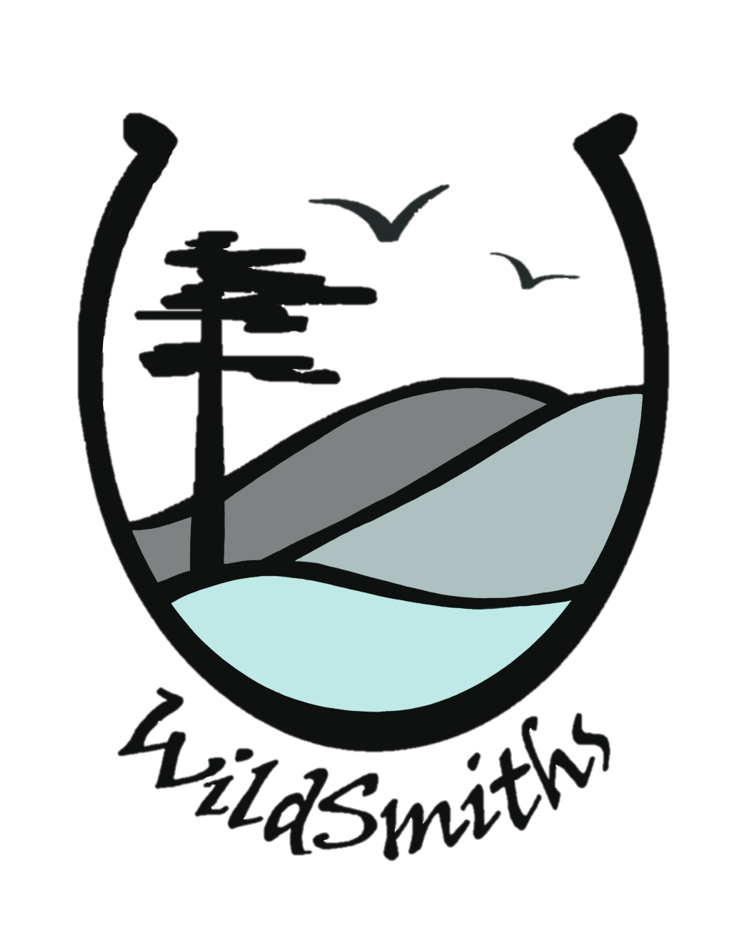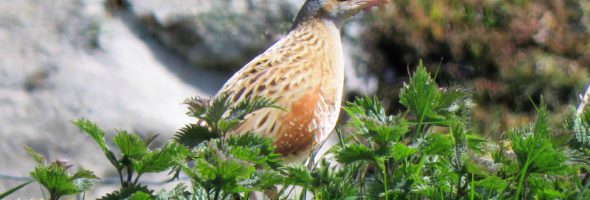
One of the highlights of the Isle of Coll’s extraordinary wildlife pageant is the corncrake.
Some might call its appearance drab, but here at WildSmiths we find the subtle tones of honey and apricot rather appealing, enabling it to blend in equally with last year’s dead grass stems and this year’s fresh nettle flowers. Subtle is not, though, the word to describe the song of the corncrake. The male’s brash, grating rasp, which even the most devoted parent would have trouble commending in its offspring, is the omnipresent sound-track of the Coll summer.
If its attraction to visitors is based not on a striking appearance, nor on a beautiful song, why are so many of us compelled to seek it out? Well that, I think, must be to do with its tragic history. You see, the corncrake was, until the start of the twentieth century, a ubiquitous denizen of British farmland – as widespread and as unremarkable as oats.

But that was before mechanised mowers, and the shift away from hay to silage, progressively wiped it off the map. By the mid-1990s, there were no more than 500 singing males clinging on, mostly in the Scottish isles. However, its seemingly inevitable slide to extinction was halted by the determined efforts of farmers, crofters and conservation bodies, supported by carefully designed and targeted agri-environment schemes. As a result, it staged a recovery, although the current population of around 1000 singing males looks like it may be in decline again. That puts Coll’s hundred into context – this really is a top place in the UK for them.

So, where can you see one? Most visitors to Coll will, at some point, have made their way down to the fertile valley farmland at the southern end of the island, where the RSPB has its famous reserve, in the hope of catching up with one. But, for a bird that is so noisy, the corncrake is famously elusive.

Sarah and I once spent an afternoon sat on the RSPB’s viewing platform, surrounded by singing corncrakes, but unable to see a single one. After a couple of hours, some cyclists arrived and, before they could sit down, three corncrakes popped into view right in front of us and strutted up and down. Crippling views! As quickly as they had appeared, the corncrakes slipped away again, back into the dense vegetation. At which the cyclists said “That was great! Right, we’re off to get a cup of tea.” “Not so fast,” we replied. “Do you know how long we’ve been sat here? It’s your turn to put in a couple of hours, while we get a cup of tea!”

Why so elusive? In part, it’s down to the height of the vegetation they nest in. Within a few weeks of the birds’ arrival in mid-April, the rough grassland, nettle beds and irises are as high as a corncrake’s eye and, very quickly, they disappear from view. It’s this, coupled with their remarkable reluctance to fly more than a couple of metres once they’re on their breeding grounds – as if, having migrated 7,000 miles from equatorial Africa to flop down in a Hebridean nettle bed, they think “Blowed if I’m doing that again!” Sarah and I had a similar reaction after we ran a half-marathon a few years back!

So Coll is definitely the place to be if you want the best chance of a corncrake encounter. If you’re here at any time between April and August, you will almost certainly hear them and have a very good chance of seeing one – if you just spend enough time sitting on that viewing platform. You could also join us on one of our WildSmiths walks and enjoy many other aspects of Coll’s wonderful wildlife as well.


